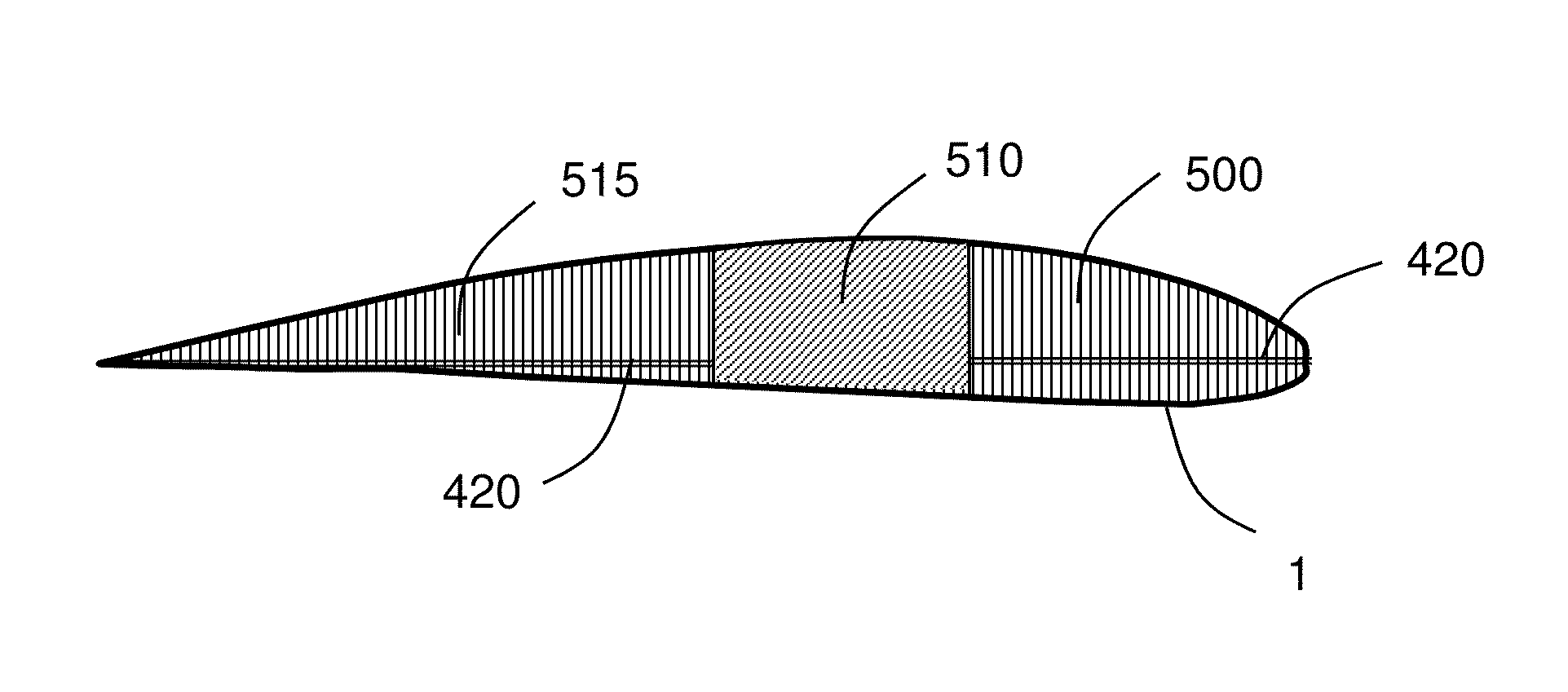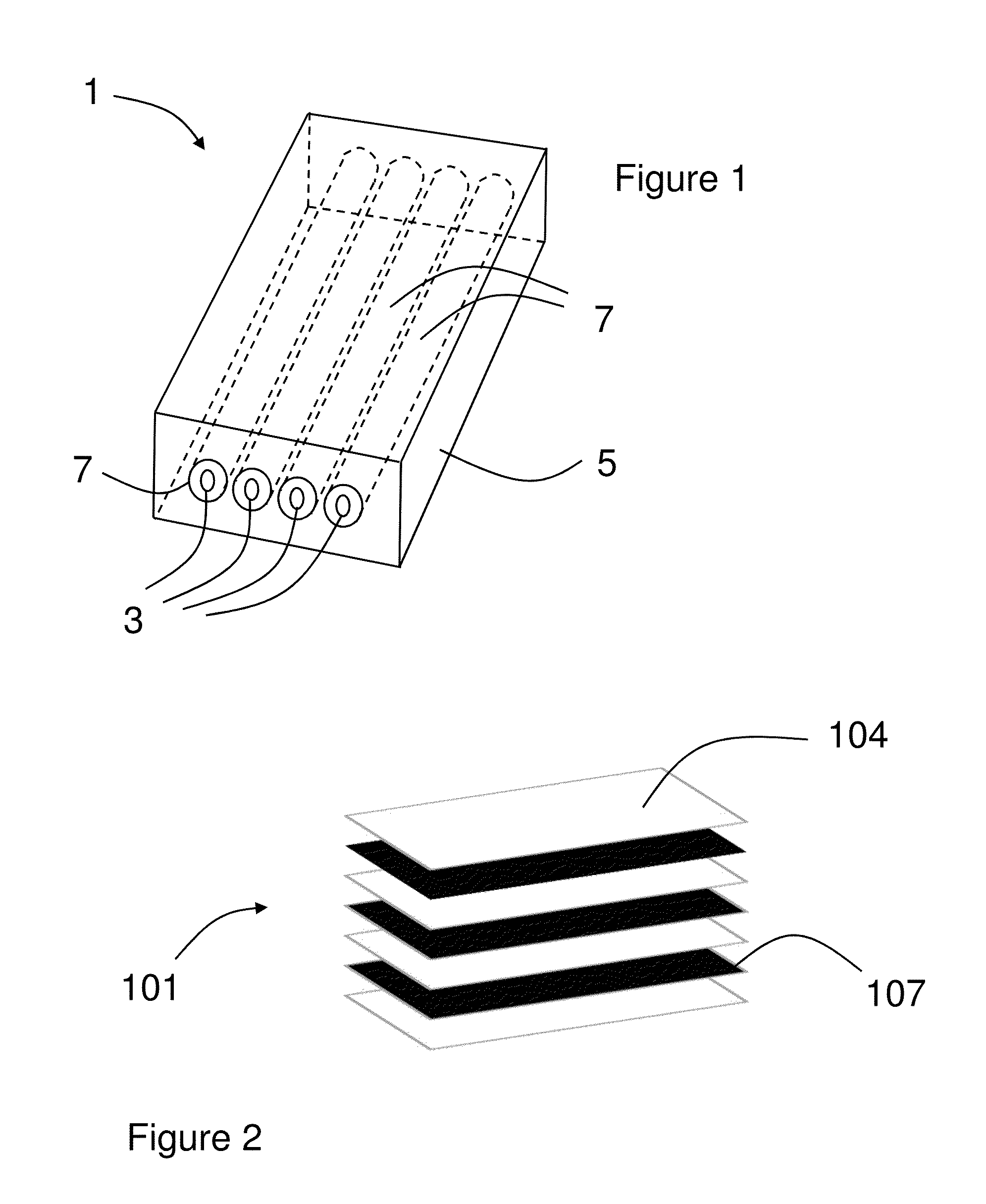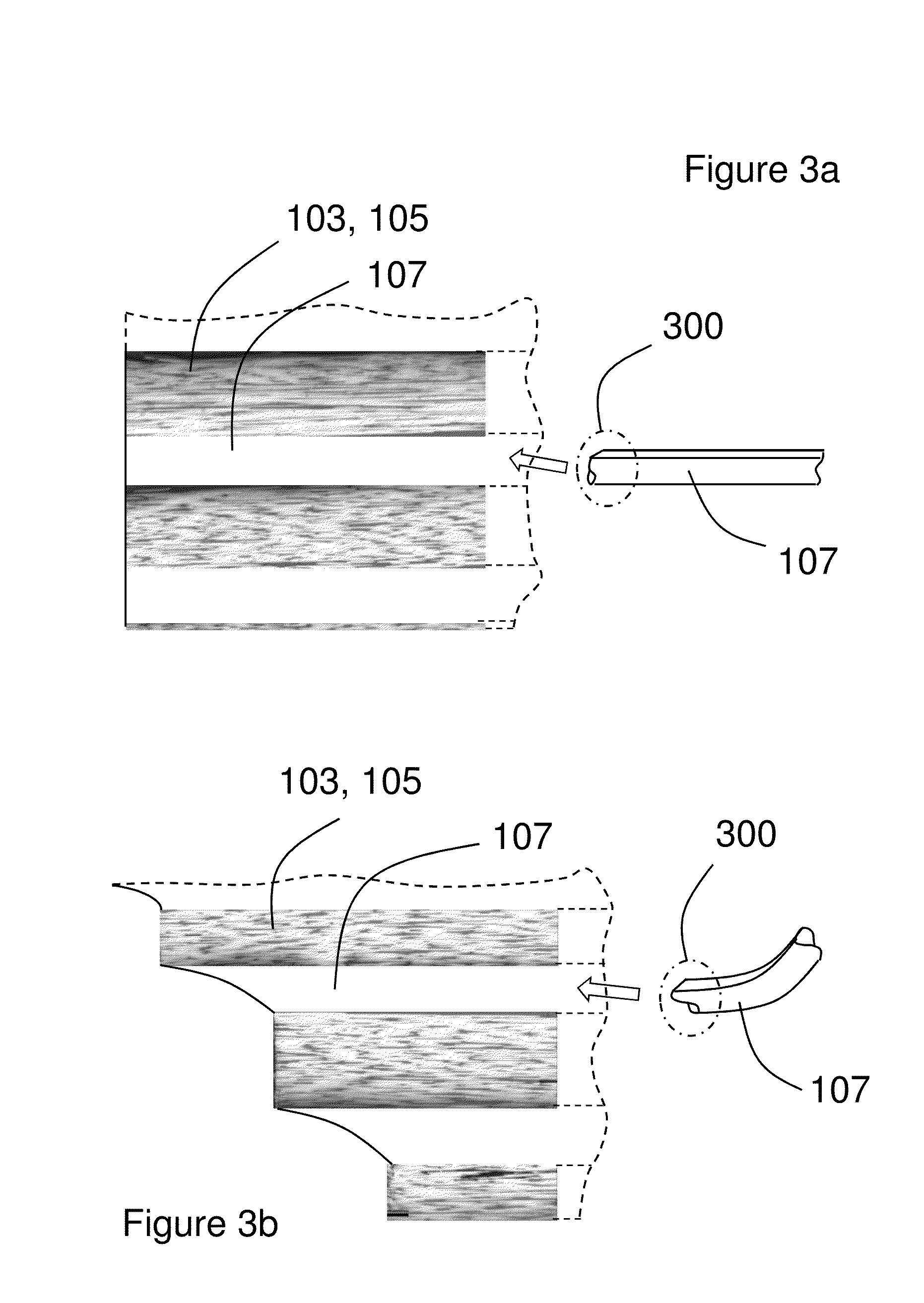Composite material suitable for a morphing skin
a technology of composite materials and skins, applied in the field of composite materials, can solve the problems of difficult to achieve a smooth surface, inability to cope with high load environments such as aircraft wings, and inability to carry and transfer aerodynamic loads to the underlying structur
- Summary
- Abstract
- Description
- Claims
- Application Information
AI Technical Summary
Benefits of technology
Problems solved by technology
Method used
Image
Examples
first embodiment
[0039]FIG. 1 is a schematic view of a composite material 1 according to the invention. The composite material 1 is for use on a morphing skin forming the outer surface of a wing of an air vehicle (not shown).
[0040]The composite material 1 comprises a plurality of unidirectional carbon fibres 3 incorporated into an epoxy matrix 5, and a thermo-sensitive material 7. As shown in FIG. 1, the surface of the fibres 3 is coated in the thermo-sensitive material 7 such that the thermo-sensitive material 7 forms an interface between the carbon fibres 3 and the matrix 5.
[0041]In the first embodiment of the invention, the thermo-sensitive material 7 is a poly(methyl methacrylate-co-acrylamide) copolymer (p(MMA-co-AAm)). MMA is the monomer for PMMA, an amorphous polymer with glass transition temperature (Tg) around 105-120° C. AAm was chosen as co-monomer as it was found to provide effective adhesion between carbon fibres and an epoxy matrix.
[0042]The composite material 1 was manufactured as fol...
third embodiment
[0055]FIG. 2 is a schematic exploded view of a morphing skin of the invention. The skin is located on the engine air-intake of an air-vehicle (not shown). The skin comprises a composite material 101 having interleaved layers of 125 μm Carbon-Fibre reinforced thermoset (CFRP) 104 and 130 μm polystyrene 107. The CFRP 104 is made up of unidirectional carbon fibres 103 and an epoxy matrix 105 (not separately visible in FIG. 2).
[0056]The composite material 101 is made up of seventeen alternating layers of CFRP 104 and polystyrene 107 (only some of which are shown in FIG. 2). To form the composite material, the layers were placed into a hot press and cured at 175° C. and 100 Psi for 1 hour.
[0057]FIGS. 3a and 3b are sectional images of the composite material in a flat state (FIG. 3a) and a morphed (bent) state (FIG. 3b). The morphed state is achieved by heating the polystyrene layers 107 to 120° C. such that the elastic modulus of the polystyrene 107 reduces, thereby reducing the ability ...
PUM
| Property | Measurement | Unit |
|---|---|---|
| tensile strength | aaaaa | aaaaa |
| transition temperature | aaaaa | aaaaa |
| transition temperature | aaaaa | aaaaa |
Abstract
Description
Claims
Application Information
 Login to View More
Login to View More - R&D
- Intellectual Property
- Life Sciences
- Materials
- Tech Scout
- Unparalleled Data Quality
- Higher Quality Content
- 60% Fewer Hallucinations
Browse by: Latest US Patents, China's latest patents, Technical Efficacy Thesaurus, Application Domain, Technology Topic, Popular Technical Reports.
© 2025 PatSnap. All rights reserved.Legal|Privacy policy|Modern Slavery Act Transparency Statement|Sitemap|About US| Contact US: help@patsnap.com



